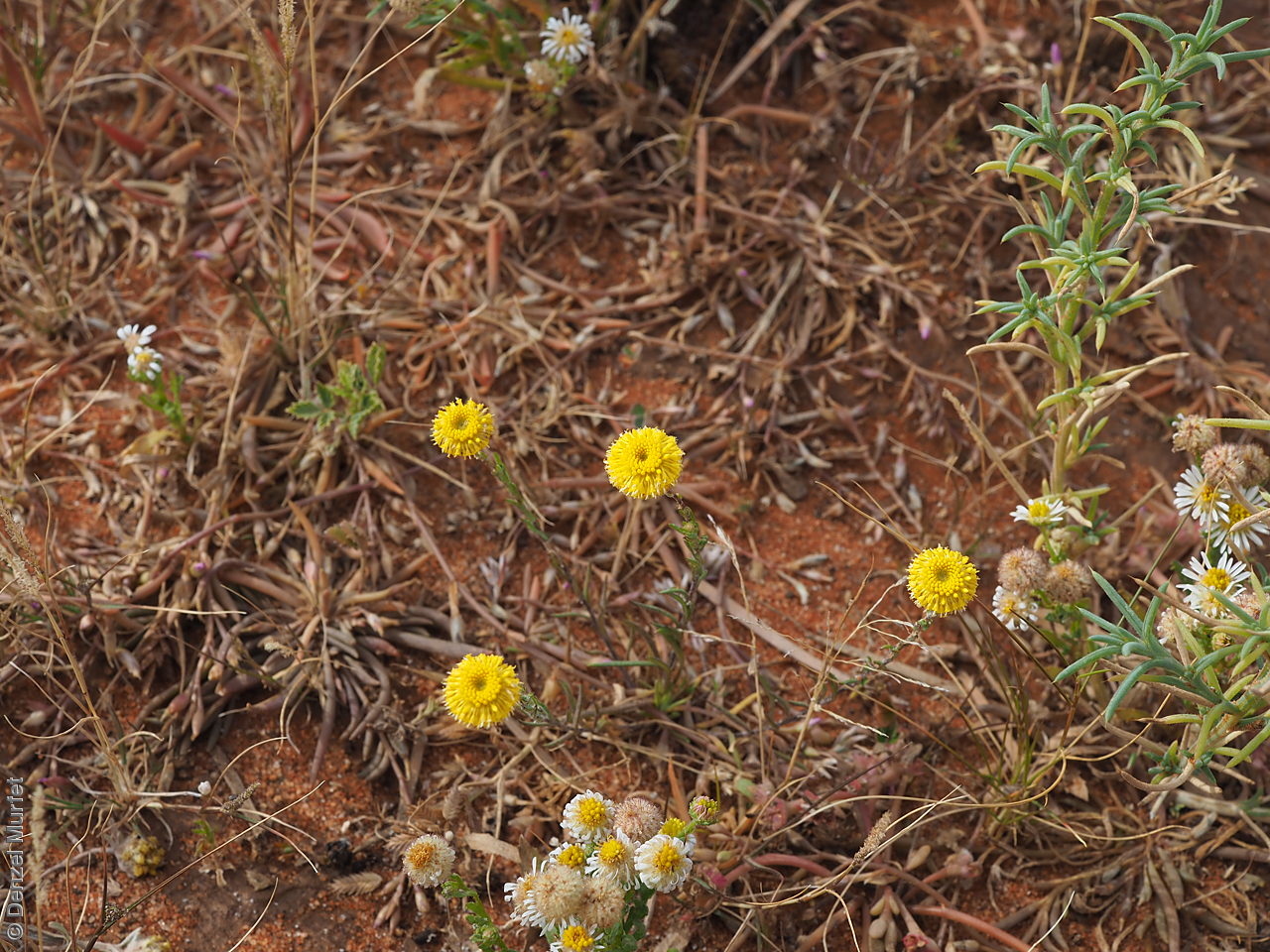
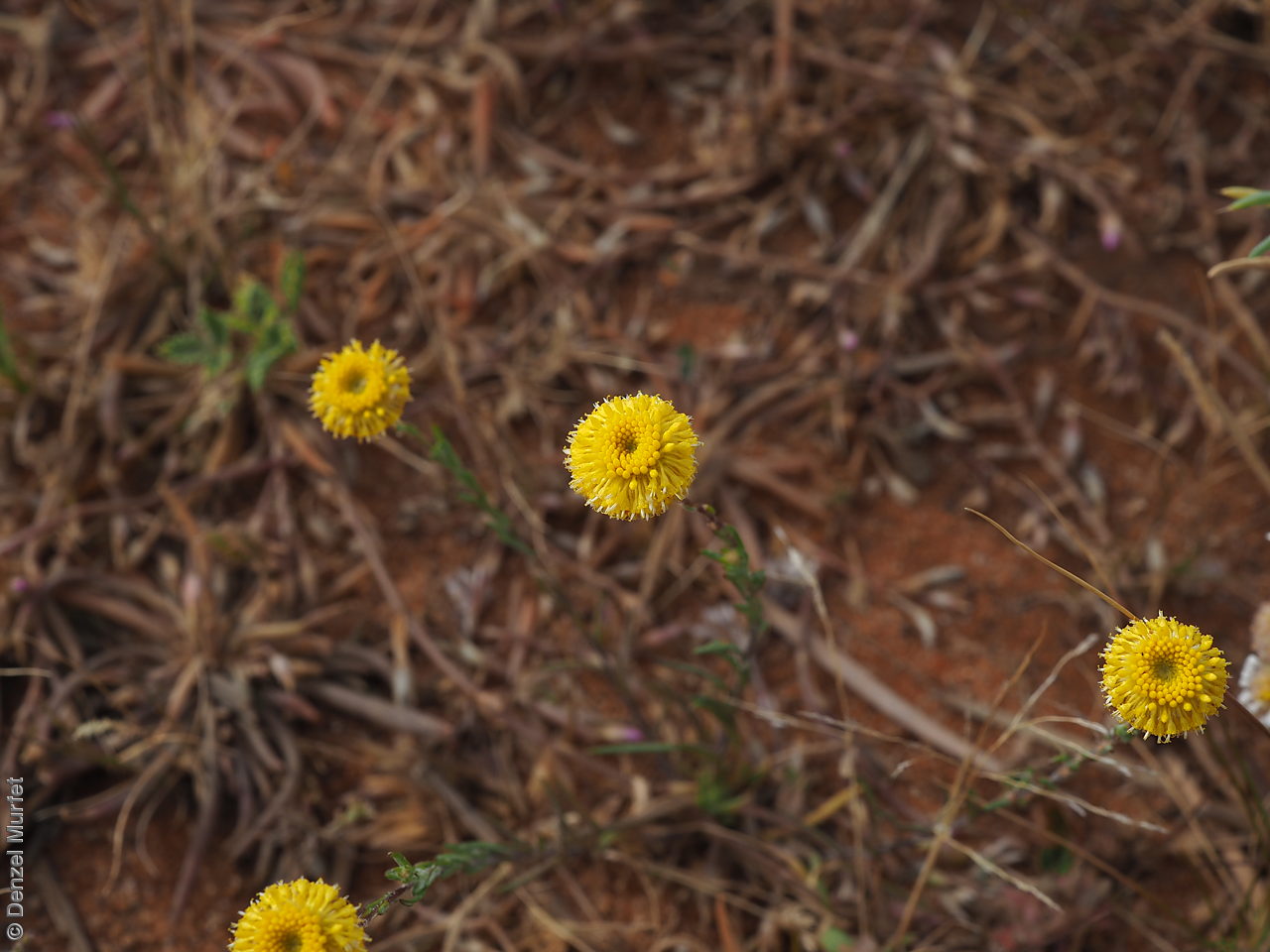
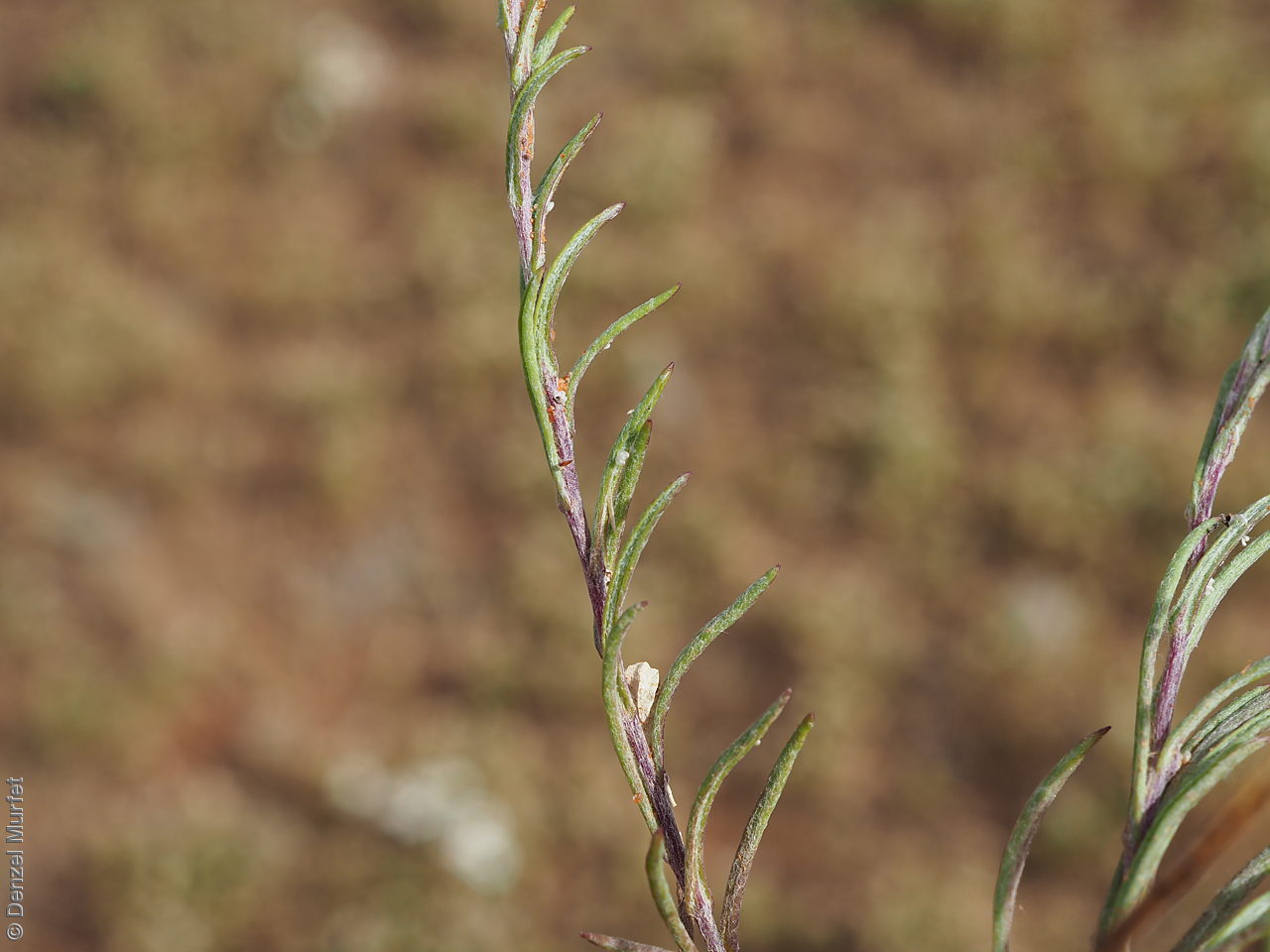
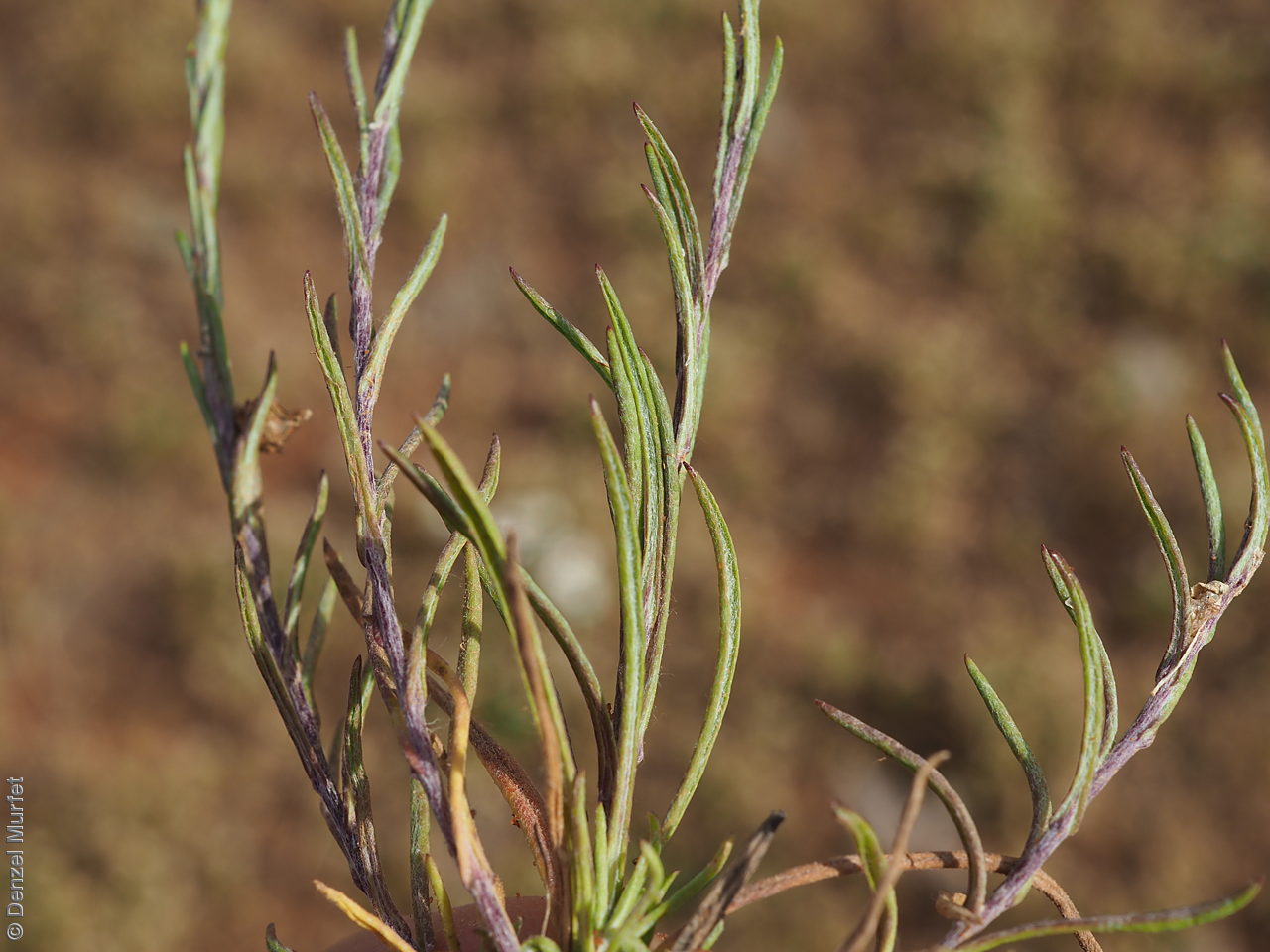
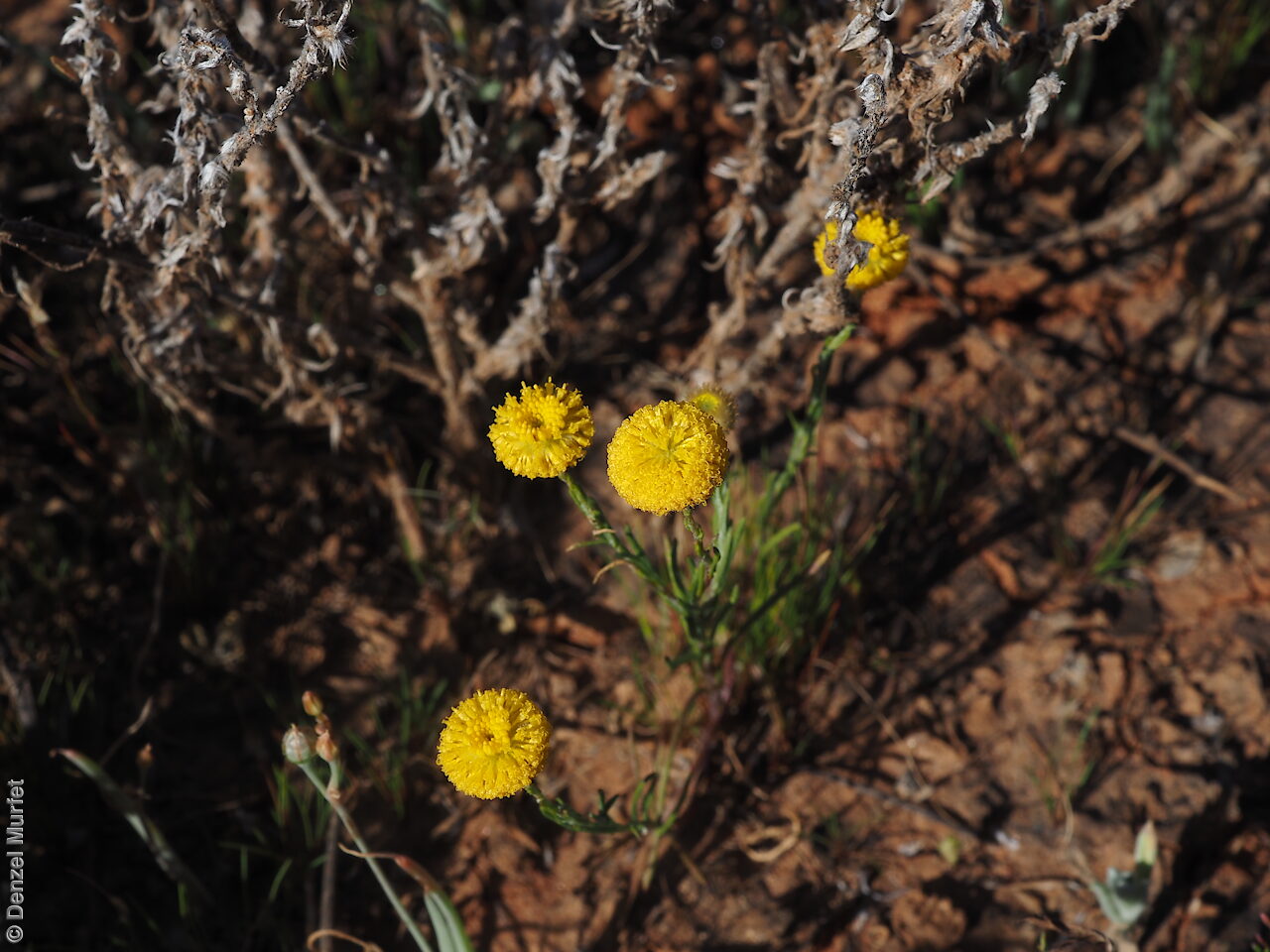
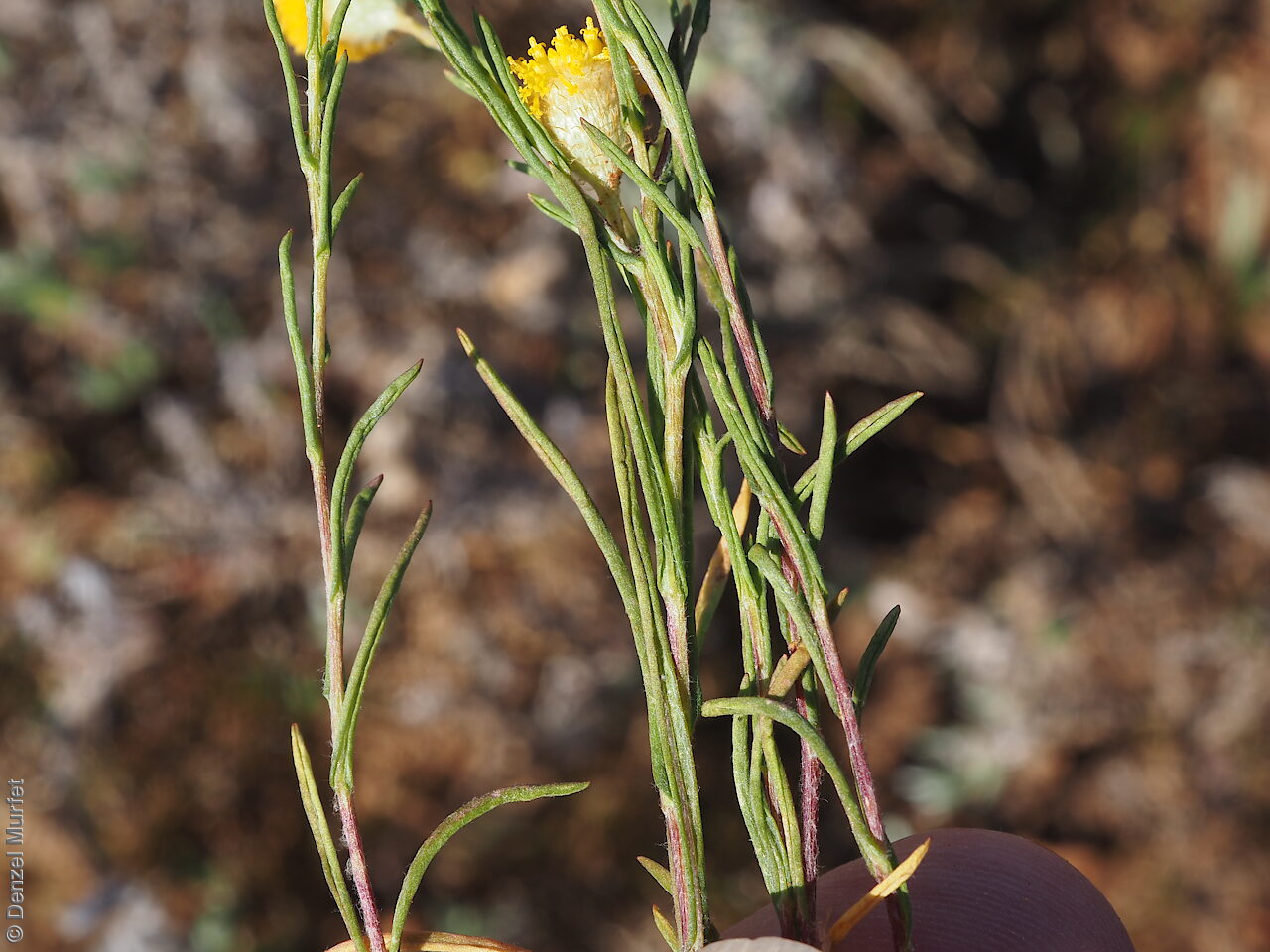
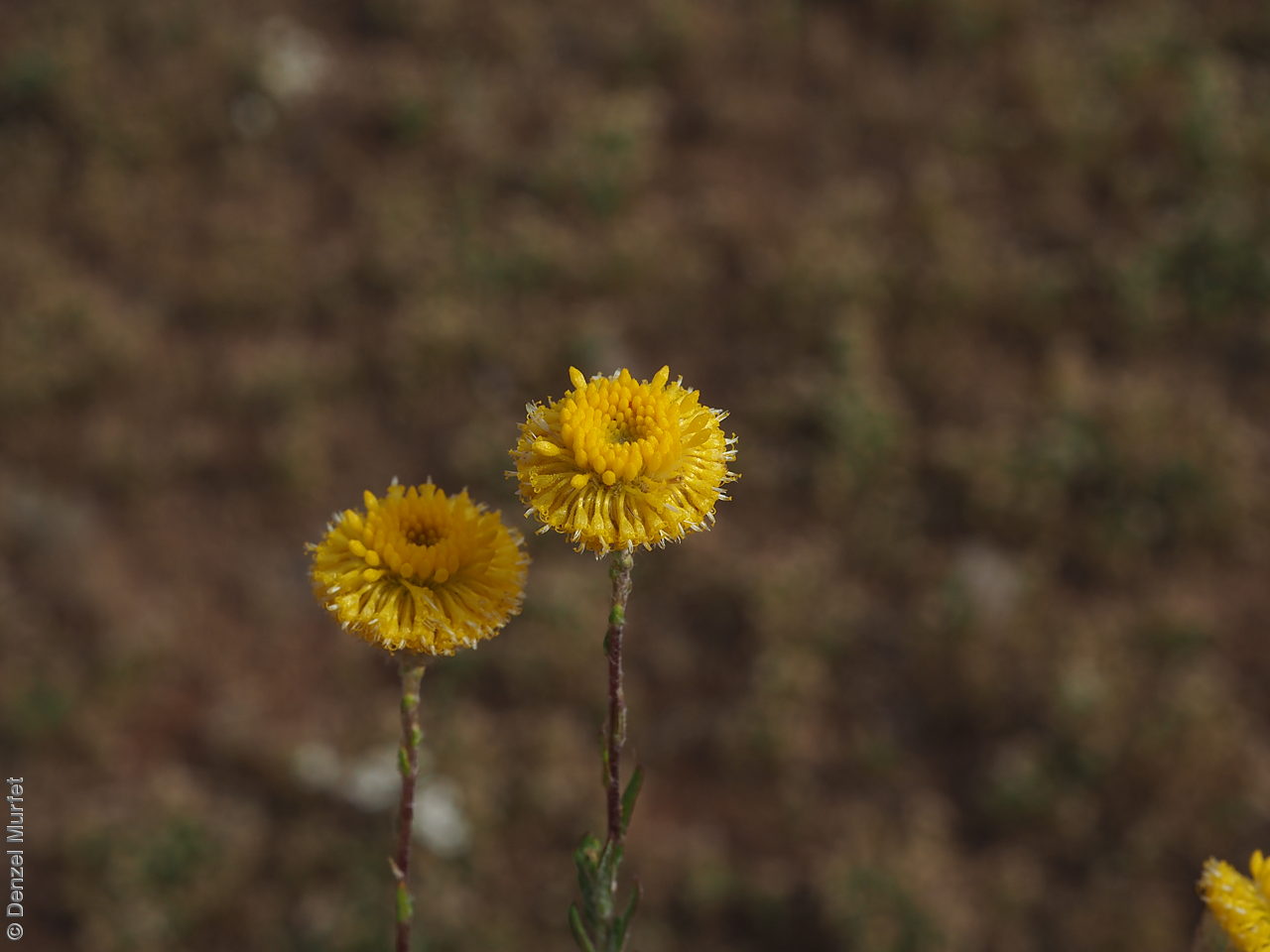
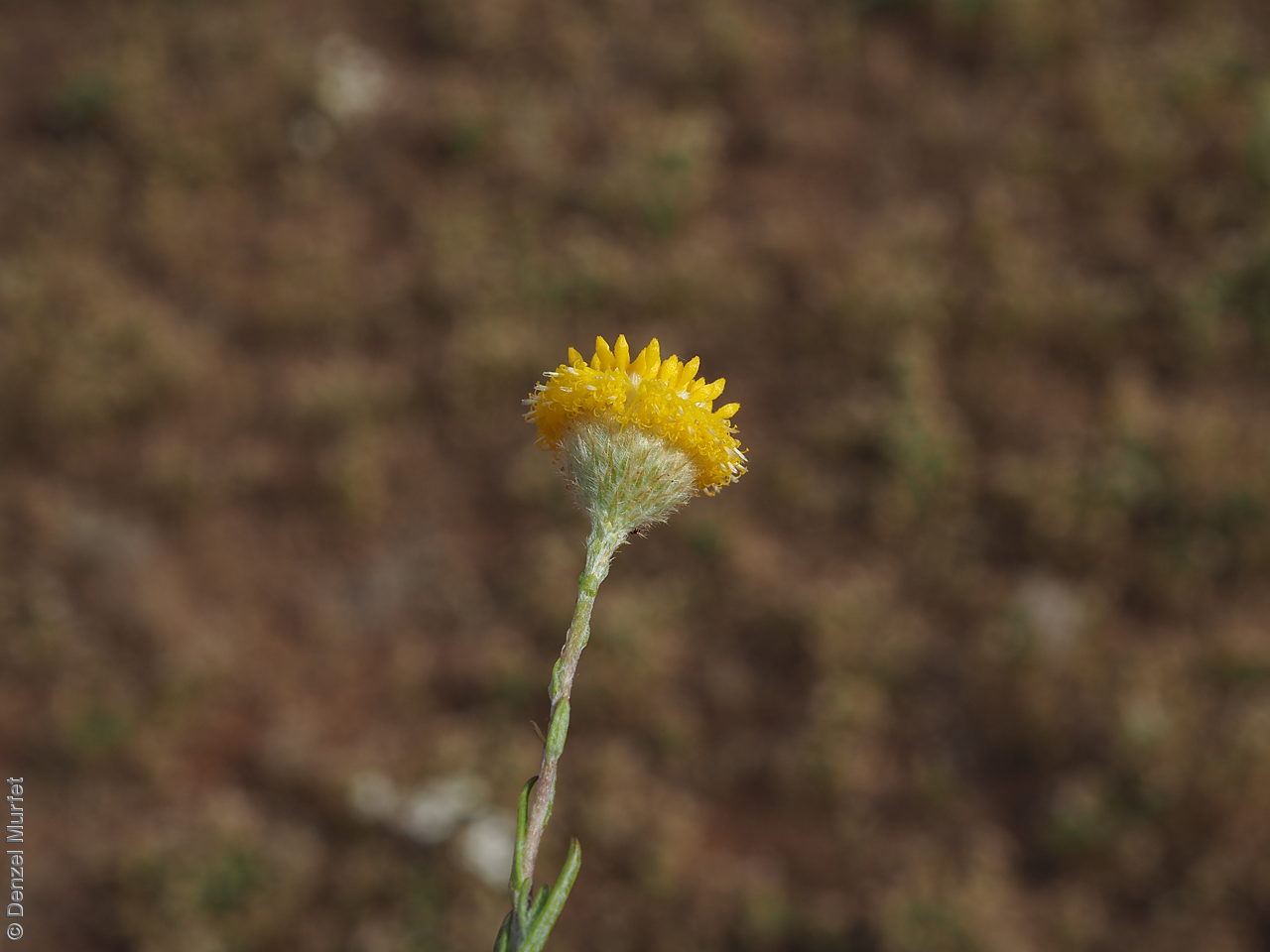
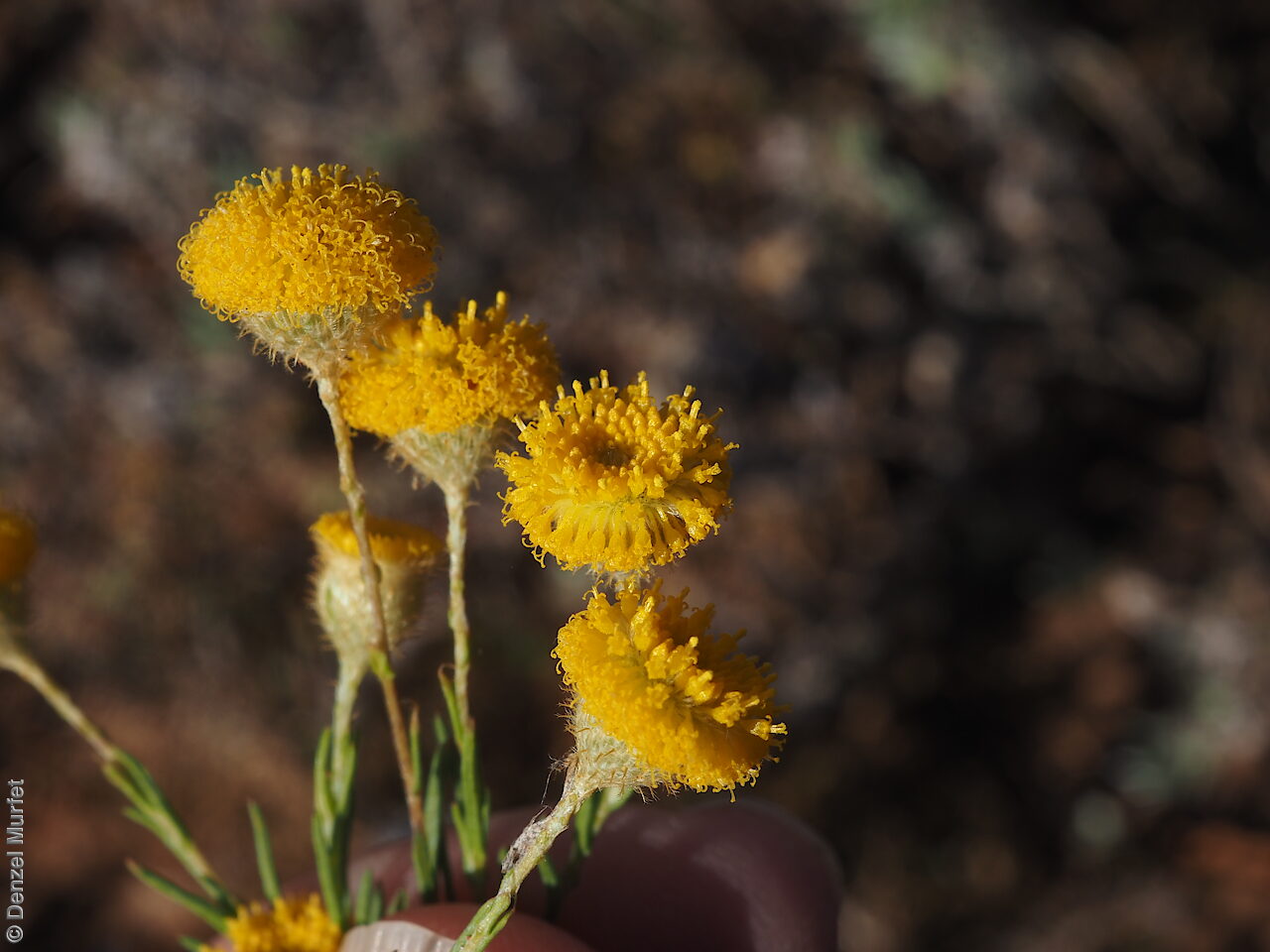
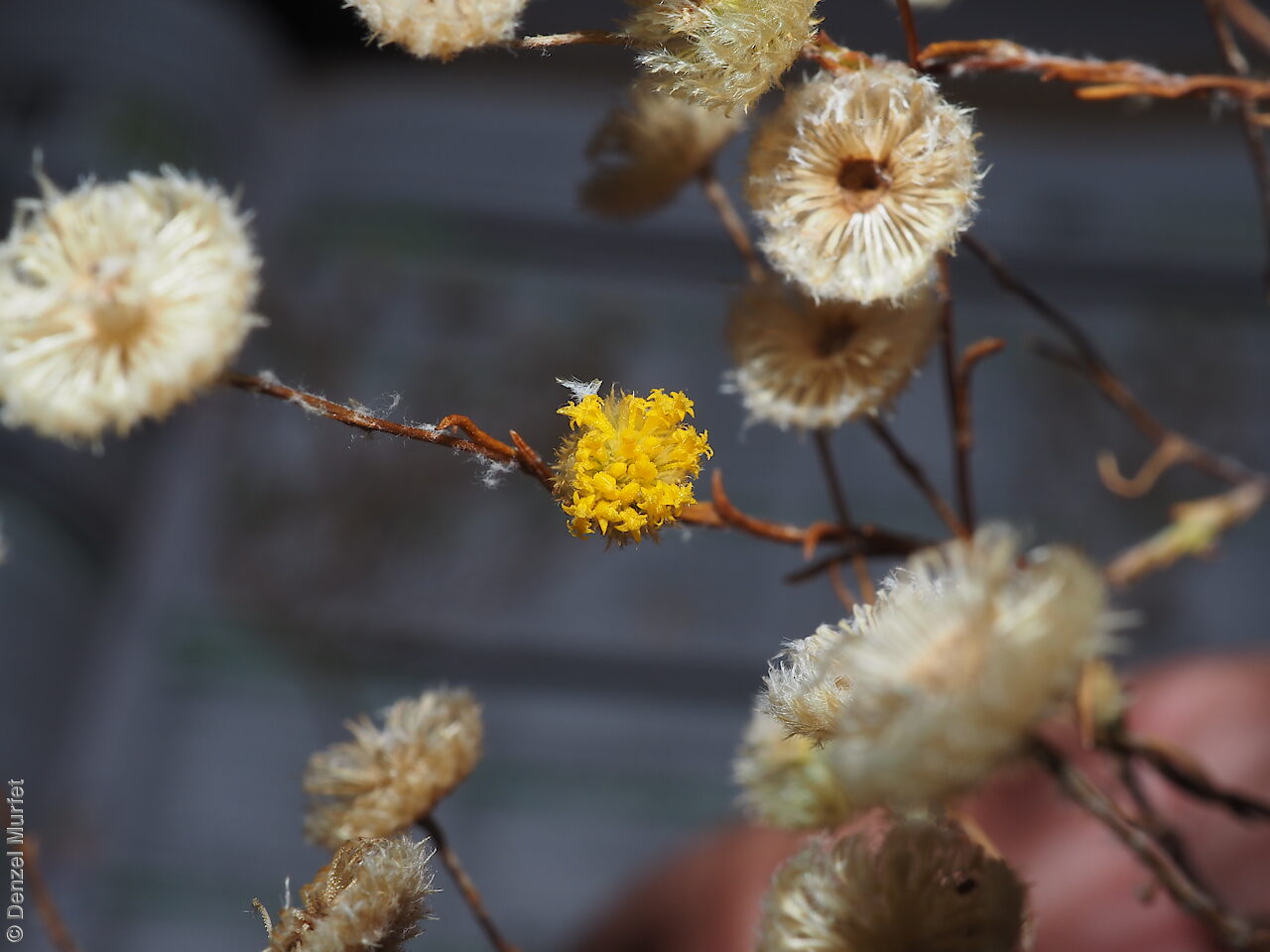
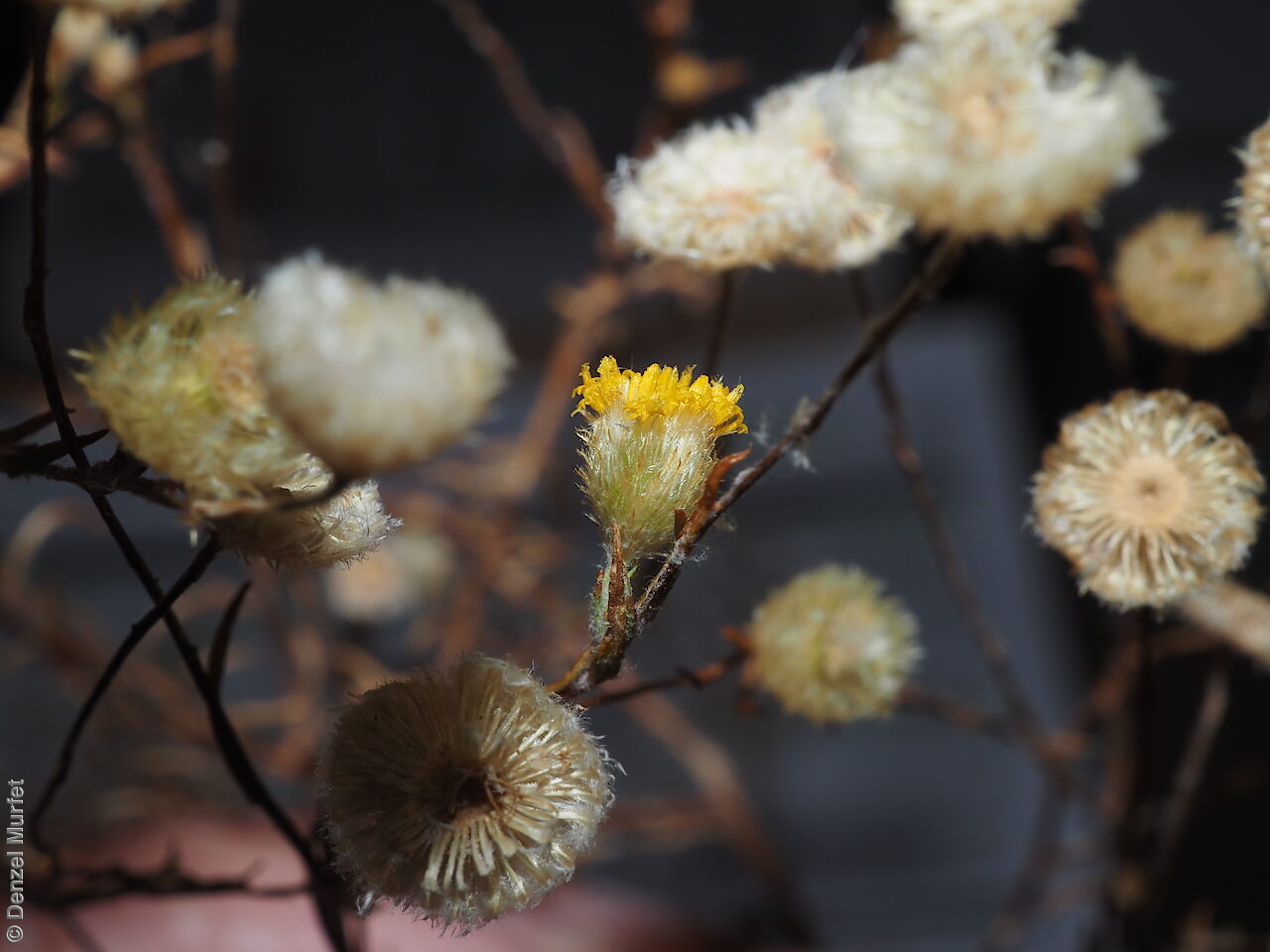
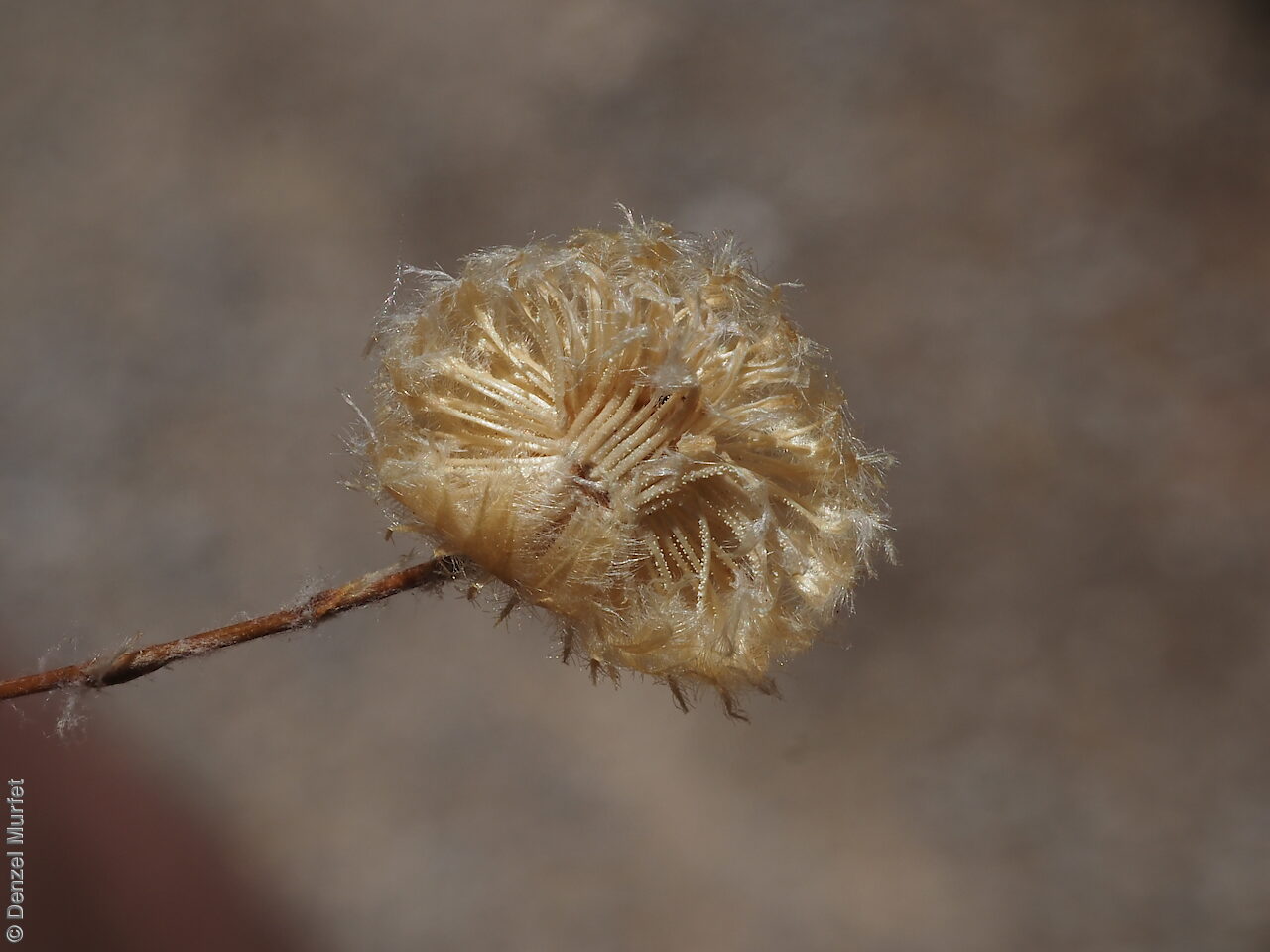
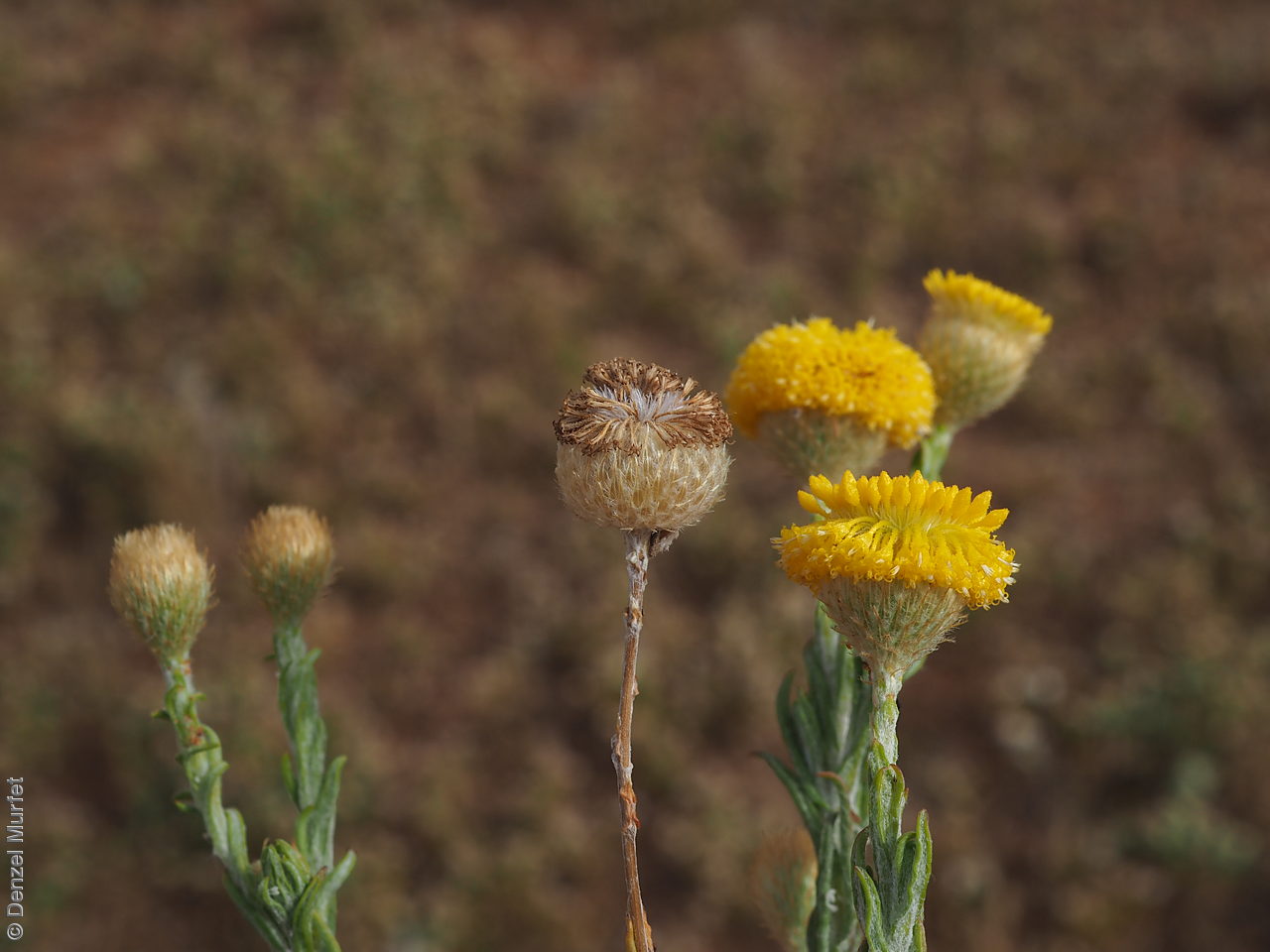
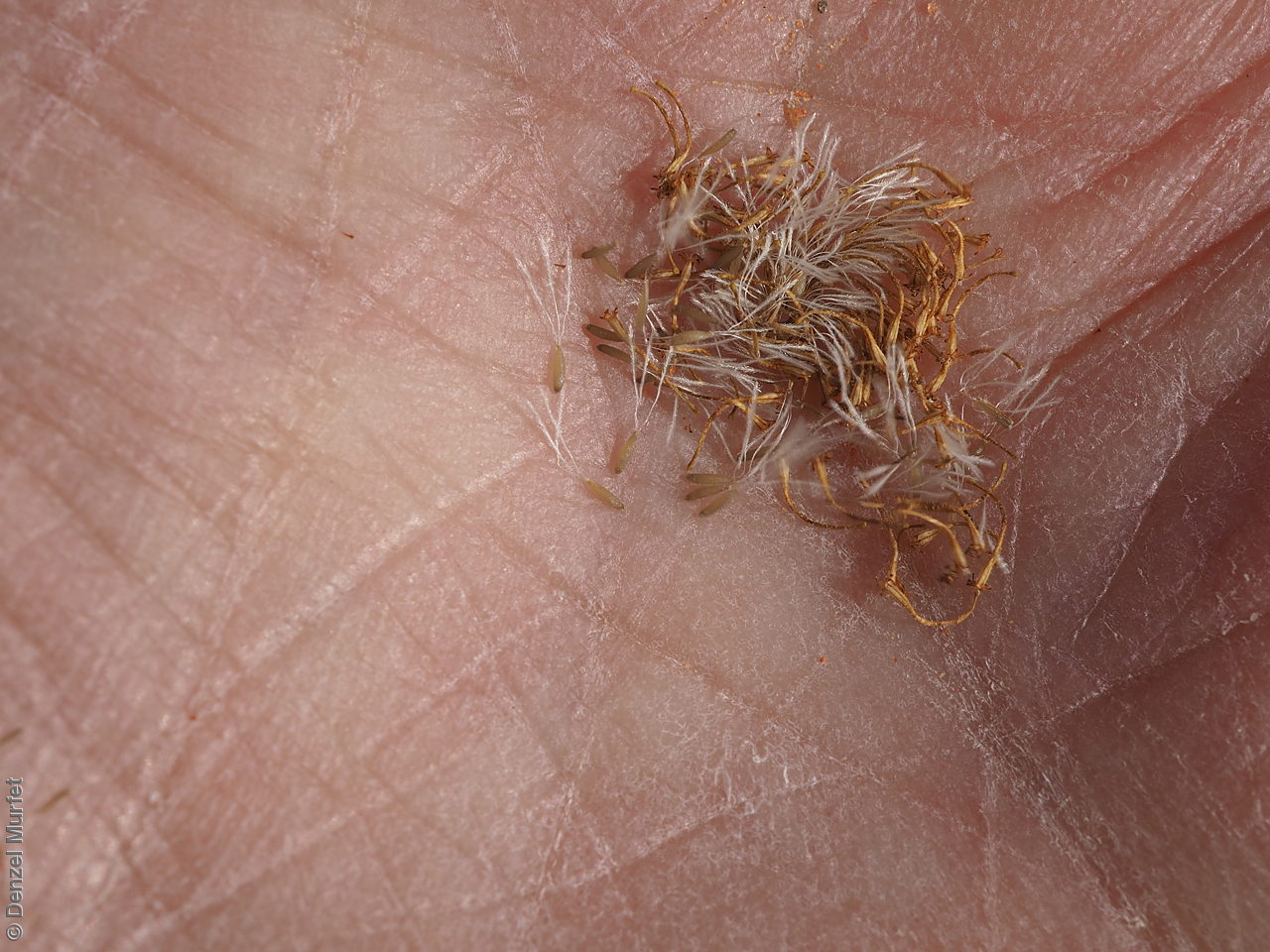

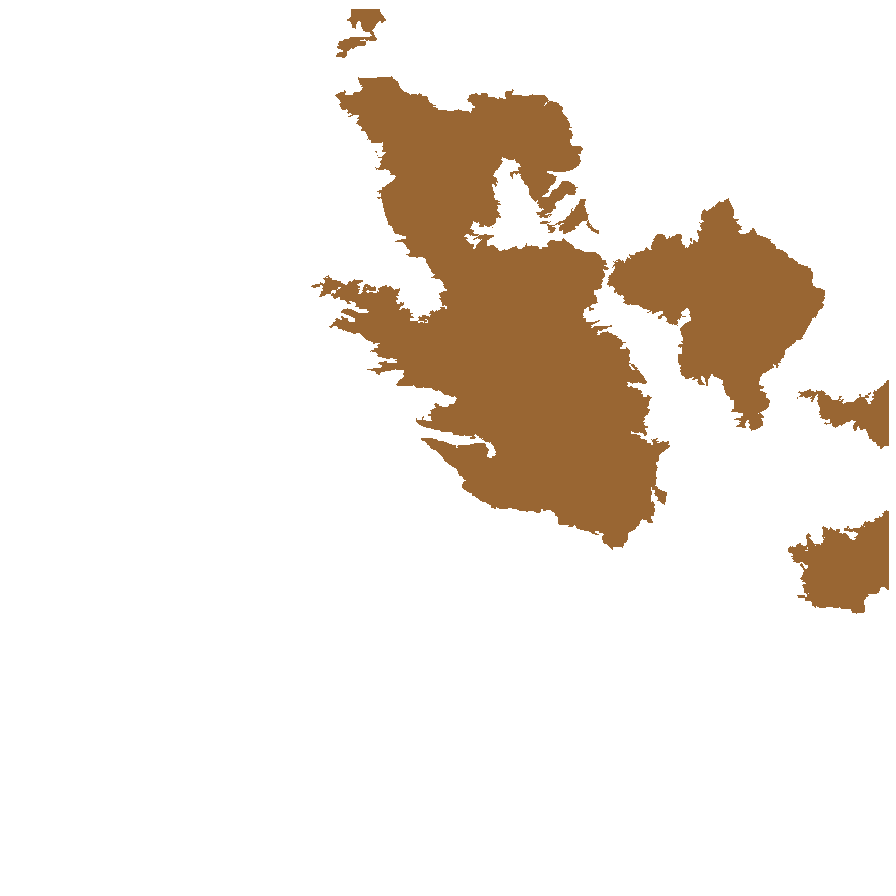
Prior names
Helichrysum basedowii
Leptorhynchos tetrachaetus var. penicillatus
Common names
Woolly Buttons
Bailey
Etymology
Leptorhynchos from the Greek 'leptos' meaning slender and 'rhynchos' meaning a snout; alluding to the beaked achenes of some species. Baileyi named after Frederick Manson Bailey (1827-1915), a colonial botanist, born in London who migrated to Australia in 1838 and made valuable contributions to the characterisation of the flora of Queensland.
Distribution and status
Found in the north and north-east parts of South Australia, growing in Acacia shrubland, on sandy and sandy loam soils. Also found in Queensland and New South Wales. Native. Common in South Australia. Common in the other states.
Herbarium regions: North Western, Lake Eyre, Gairdner-Torrens, Flinders Ranges, Eastern, Eyre Peninsula, Murray
NRM regions: Alinytjara Wilurara, Northern and Yorke, South Australian Arid Lands, South Australian Murray-Darling Basin
AVH map: SA distribution map (external link)
Plant description
Slender annual herb to 25 cm tall, stems ascending to erect, sparingly to much-branched, with a sparse vestiture of cobwebby hairs. Leaves linear, with recurved margins, acute apex and a broadly sessile base, to 2 cm long and 1.5 mm wide, sparsely pubescent like the stems, more densely so on the underside and with minute glandular hairs on both sides. Compound flower-head, hemispherical to 9 mm long and 10 mm wide, involucral bracts extending down peduncle, cobwebby especially towards base, florets mid-yellow diasy-flower. Flowering between August and November. Fruits are white fluffy daisy-head. Seeds are oblong-elliptic achenes, with a tubercule surface and long pappus. Seed embryo type is spatulate fully developed.
Seed collection and propagation
Collect seeds between November and December. Collect heads that are fluffy. Either pick off the whole heads or use your finger and pull off the seeds from the head. Mature seeds will come off easily. Place the heads in a tray for a week to dry. No cleaning is required if only pure seeds are collected. If heads are collected, then rub the heads gently with your hands to dislodge the seeds. Viable seeds will be fat and hard. Use a sieve to separate the unwanted material. Store the seeds with a desiccant such as dried silica beads or dry rice, in an air tight container in a cool and dry place.